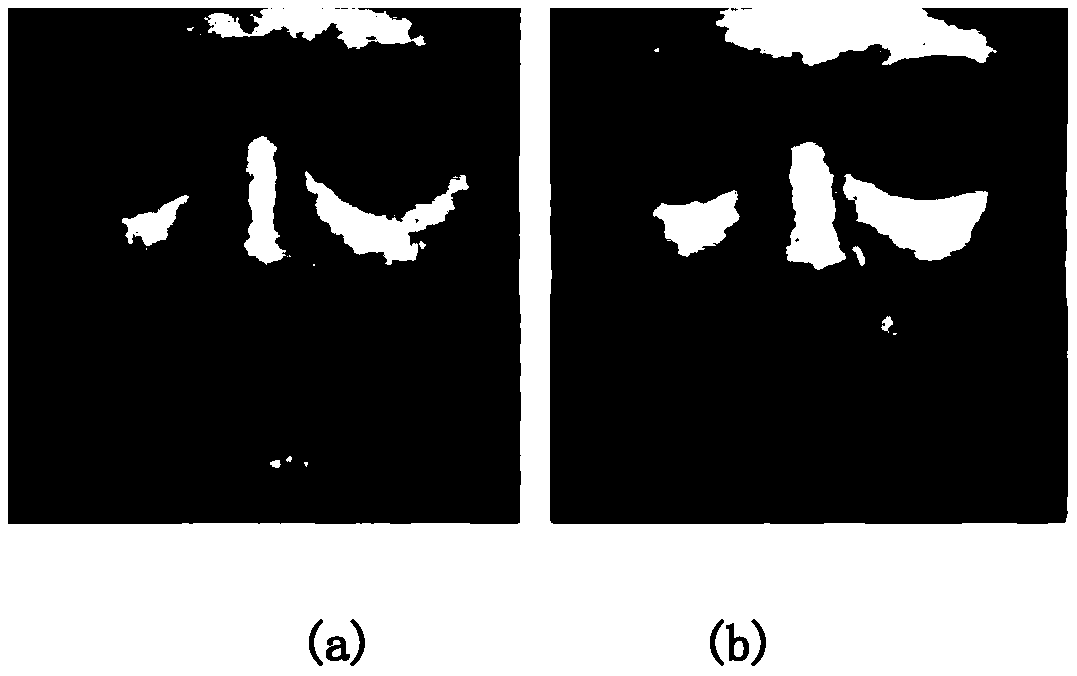Living body detection method based on facial microexpression recognition
A technology of liveness detection and micro-expression, which is applied in the field of artificial intelligence face recognition and analysis, which can solve the problems of high privacy of data verification, easy leakage of face portraits, and leakage of face information, and achieve simple and fast verification methods , highly operable effect
- Summary
- Abstract
- Description
- Claims
- Application Information
AI Technical Summary
Problems solved by technology
Method used
Image
Examples
Embodiment 1
[0039] 1) Use opencv to access the local or network camera;
[0040] 2) Use the DLIB framework face detection method to detect whether the face appears in the video, and cut and store the face area to obtain face face1;
[0041] 3) The system randomly generates an expression, and guides the verification to make an expression;
[0042] 4) Pass the face area face1 into the model trained with the caffe deep learning network, identify the facial expression label1, and judge whether it is consistent with the required facial expression: if yes, continue to the next verification; if not, you need to start again verify;
[0043] 5) Execute the above steps 2) and 3) again to obtain face2;
[0044] 6) Use DLIB convolutional network face recognition to judge the similarity between face1 and face2. If the similarity exceeds a predetermined threshold, it is considered to be a person.
Embodiment 2
[0046] Train facial expression recognition with the deep learning framework TENSORFLOW. Because TENSORFLOW is a framework developed based on the python language, for compatibility, other frameworks must also use the version corresponding to the python interface during implementation.
[0047] 1) Use opencv_python to access the local or network camera;
[0048] 2) Use python_dlib to detect and crop living people;
[0049] 3) Pass the user's micro-expression into the network trained by tensorflow, and obtain the expression result predicted by the tensorflow framework;
[0050] 4) After the expression is successfully verified once, the living person is detected again and cropped;
[0051] 5) Use python_dlib convolutional network face recognition to judge whether the two results are a person.
[0052] The tensorflow main application is deployed in the network, which can be a cloud server or a LAN server.
Embodiment 3
[0054] Torch is mainly a deep learning training framework under the Lua language architecture.
[0055] Using the Torch method is similar to the steps of tensorflow, except that the model trained by the deep learning network in step 3) is Torch, and the face detection, positioning, and recognition algorithms can only be redefined and implemented using the algorithms provided by the framework of Torch itself. In terms of use, Torch has poor compatibility with the current mainstream ready-made image recognition library openCVDlib, and there are few materials. Therefore, when using the torch framework, the interface of the torch framework is used. Since the number of people used by Torch is relatively small compared with caffe and tensorflow, it is difficult to detect people. There is a certain gap in the accuracy and efficiency of the face.
PUM
 Login to View More
Login to View More Abstract
Description
Claims
Application Information
 Login to View More
Login to View More - R&D
- Intellectual Property
- Life Sciences
- Materials
- Tech Scout
- Unparalleled Data Quality
- Higher Quality Content
- 60% Fewer Hallucinations
Browse by: Latest US Patents, China's latest patents, Technical Efficacy Thesaurus, Application Domain, Technology Topic, Popular Technical Reports.
© 2025 PatSnap. All rights reserved.Legal|Privacy policy|Modern Slavery Act Transparency Statement|Sitemap|About US| Contact US: help@patsnap.com


